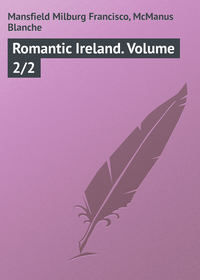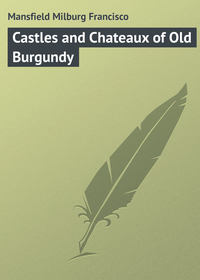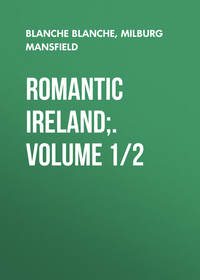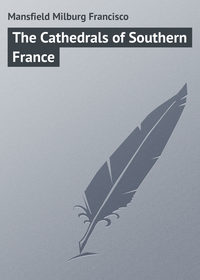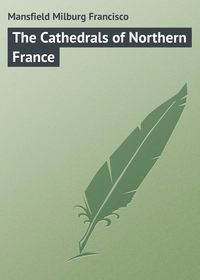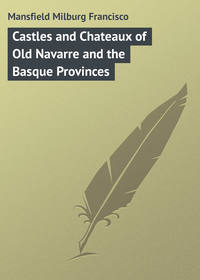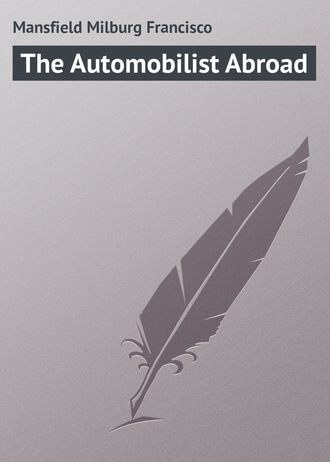 полная версия
полная версияThe Automobilist Abroad
We passed through what, for the want of a better and more distinctive name, may be called the Waterloo region; but, for the moment, we cared not a jot for battle-fields. Our battle with the ugly roads of Belgium was all-sufficient.
Southey's verses are so good, though, that they are here given in order that the writer may arrive the quicker at Brussels and take his well-earned rest:
"Southward from Brussels lies the field of blood,Some three hours' journey for a well-girt man;A horseman who in haste pursued his roadWould reach it as the second hour began.The way is through a forest deep and wide,Extending many a mile on either side.""No cheerful woodland this of antique trees,With thickets varied and with sunny glade;Look where he will, the weary traveller seesOne gloomy, thick impenetrable shadeOf tall straight trunks, which move before his sight,With interchange of lines of long green light.""Here, where the woods receding from the roadHave left on either hand an open spaceFor fields and gardens, and for man's abode,Stands Waterloo; a little lowly place,Obscure till now, when it hath risen to fame,And given the victory its English name."Finally we reached Brussels, still over cobblestones, the road growing worse every minute, and stopped at the Grand Central Hotel, in the Place de la Bourse, the correspondent of the Touring Club de France, and the only hotel of its class which serves its table d'hôte "vin compris."
Brussels has ever been put down in the notebooks of conventional travellers as a little Paris; but this is by no means the case. It resembles Paris not at all, except that French francs pass current in its shops and the French tongue is the language of commerce and society.
What has less frequently been remarked is that Brussels has two contrasting elements of life, which, lying close, one upon the other, strongly exaggerate the French note of it all, and make the hotels, cafés, restaurants, etc., take on that boulevard aspect which we fondly think is Parisian.
French Brussels and Flemish Brussels are as distinct elements in the make-up of this doubleheaded city as are the ingredients of oil and water, and like the latter they do not mix.
When one descends from the hilltop on which is modern Brussels, past the cathedral of Ste. Gudule, he leaves the shops, the cafés, and the boulevards behind him and enters the past.
The small shopmen, and the men and women of the markets, all look and talk Flemish, and the environment is everywhere as distinctly Flemish as if one were standing on one of the little bridges which cross the waterways of Ghent or Bruges.
The men and women are broad-bodied and coarse-featured, – quite different from the Dutch, one remarks, – and they move slowly and with apparent difficulty in their clumsy sabots and heavy clothing. The houses round about are tall and slim, and mostly in that state of antiquity and decay which we like to think is artistic.
Such is Flemish Brussels. Even in the Flemish part, the city has none of that winsome sympathetic air which usually surrounds a quaint mediæval bourg. Rather it gives one the impression that old traditions are all but dead and that it is mere improvidence and laisser-aller that allows them to exist.
Flemish Brussels is picturesque enough, but it is squalid, except for the magnificent Hôtel de Ville, which stands to-day in all the glory that it did when Charles V. of Spain ruled the destinies of the country.
It was in the square in front of the Hôtel de Ville that Alva gloated over the flowing blood of his victims as it ran from the scaffold.
The churches of Brussels, as might be supposed from the historical importance of the city in the past, are numerous and celebrated, at least they are characteristically Flemish in much of their belongings, though the great cathedral of Ste. Gudule itself is Gothic of the unmistakable French variety.
Brussels, its cathedrals, its Hôtel de Ville, its Cloth Hall, and its Corporation or Guild Houses, and many more splendid architectural sites and scenes are all powerful attractions for sightseers.
We went from Brussels to Ghent, forty-eight kilometres, and still over pavé. The bicyclist is better catered for, he has cinder side-paths almost all over Belgium and accordingly he should enjoy his touring in occidental and oriental Flanders even more than the automobilist.
Ghent was one day a seaport of rank, much greater rank than that of to-day, for only a sort of sea-going canal-boat, a chaland or a caboteur, ever comes up the canals to the wharves.
Ghent is a great big town, but it does not seem in the least like a city in spite of its hundred and fifty thousand inhabitants. Its churches, its belfry, its château, and its museum are the chief sights for tourists – automobilists and others. We visited them all after lunch, which was eaten (and paid for at Paris prices) at the Hôtel de la Poste, and covered another forty-six kilometres of pavé, before we turned in for the night at Bruges' Hôtel du Sablon. There are others, but the Hôtel du Sablon at Bruges was modest in its price, efficient in its service, and excellent in its catering. The chief delicacy of the menu here is the mossel. One eats mussels (mossels) in Belgium – if he will – and it's hard for one to escape them. They are moules in France, mossels in Belgium and Holland, and mussels in England. They are a sea food which has never tickled the American palate; but, after many refusals and much resentment, we ate them – and found them good.
Bruges' sights are similar to those of Ghent, except that its belfry is more splendid and more famous and the Memlings of the Hôpital St. Jean draw crowds of art lovers to Bruges who never even stop at Ghent.
Our little run around Belgium, a sort of willy-nilly blowing about by the North Sea winds, drew us next to Ostende. If there is one place more splendidly chic than Ostende it is Monte Carlo. The palm is still with Monte Carlo, but, for August at any rate, Ostende, with its Digue, its hotels and terrace cafés and restaurants, is the very glass of fashion and fashionables.
It was only on entering Ostende, over the last few kilometres of the road from Bruges, just where it borders the Slykens Canal, that we met anything deserving to be called a good road since leaving the neighbourhood of Namur. The roads of Belgium served a former generation very well, but tempus fugit, and the world advances, and really Belgium's highways are a disgrace to the country.
The chief attraction of Ostende – after the great hotels – is its Digue, or Dyke, a great longdrawn-out breakwater against whose cemented walls pound the furies of the North Sea with such a virulence and force as to make one seasick even on land. "See our Digue and die," say the fisherfolk of Ostende, – those that have not been crowded out by the palace hotels, – "See our Digue and eat our oysters."
Ostende is attractive, save on the August bank holiday, when the trippers come from London; then it looks like Margate or Southend so far as its crowds are concerned, and accordingly is frightful.
One should not leave Belgium without visiting Ypres, that is if he wants to know what a highly respectable and thriving small city of Belgium is like.
Ypres is typical of the best, though unfortunately, by whichever road you approach, you still make your way over granite blocks, none too well laid or cared for. The best and almost only way to avoid them is to take to the by-roads and trust to finding your way about. This is not difficult with the excellent map of the Automobile Club de Belgique, but it requires some ingenuity to understand the native who answers your inquiry in bad French and worse Walloon or Flemish.
At Ypres the Hôtel de la Chatellenie will care for you and your automobile very well, though its garage is nothing to boast of. Both meals and beds are good, and the rates are cheap, something less than nine francs a day for birds of passage. You must pay extra for wine, but beer is thrown in, thick, sticky, sugary beer, but it's better than England's "bitter," or the lager of Rotterdam.
Ypres is full of interesting buildings, but its Hôtel de Ville and its Cloth Hall, with its lacelike façade, are easily the best. Ypres has a museum which, like most provincial museums, has some good things and some bad ones, a stuffed elephant, some few good pictures, sea-shells, the instruments which beheaded the Comte d'Egmont, and some wooden sculptures; variety enough to suit the most catholic tastes.
From Ypres we continued our zigzag through Belgium, following most of the time dirt roads which, though not of superlative excellence, were an improvement on stone blocks. It took us practically all day to reach Antwerp, a hundred and thirty kilometres away.
Belgium is everywhere quaint and curious, a sort of a cross between Holland and France, but more like the former than the latter in its mode of life, its food and drink and its industries, except perhaps in the country between Tournai and Liège.
The country between Antwerp and Brussels affords a good general idea of Belgium. Its level surface presents, in rapid succession, rich meadows, luxuriant corn-fields, and green hedgerows, with occasional patches of woodland. The smallness of the fields tells amongst how many hands the land is divided, and prepares one for the knowledge that East Flanders is the most thickly peopled corner of Europe. The exception to this general character of the scenery is found in the valley of the Meuse, where the fruitful serenity of fertile meadows and pastoral hamlets is varied by bolder, more irregular, and move striking natural features. Hills and rocks, bluff headlands and winding valleys, with beautiful stretches of river scenery, give a charm to the landscape which Belgium in general does not display.
The geographical description of Antwerp is as follows:
Antwerp, in Flemish Antwerpen, the chief town of the province of that name, is situated in a plain 51° 13' 16" north latitude, and 2° 3' 55" east longitude, twenty leagues from the sea, on the right bank of the Scheldt.
The Hôtel du Grand-Laboureur was marked out for us as the automobile hotel of Antwerp. There was no doubt about this, when we saw the A. C. F., the A. C. B., and the M. C. B. signs on its façade. It is a very excellent establishment, but you pay extra for wine, or you drink beer instead.
The sights of Antwerp are too numerous to be covered in the short time that was at our disposal on this occasion, but we gave some time to the works and shrine of the master Rubens, and the wonderful cathedral spire, and the Hôtel de Ville and the Guild Houses and all the rest, not forgetting Quentin Matsys's well. We were, however, a practical party, and the shipping of the great port, the gay cafés, and the busy life of Antwerp's marts of trade also appealed to us.
Antwerp is a wonderful storehouse of many things. "It is in the streets of Antwerp and Brussels," said Sir Walter Scott, "that the eye still rests upon the forms of architecture which appear in pictures of the Flemish school."
"This rich intermixture of towers and battlements and projecting windows highly sculptured produces an effect as superior to the tame uniformity of a modern street as the casque of the warrior exhibits over the slouch-brimmed beaver of a Quaker." This was true of Sir Walter Scott's time, and it is true to-day.
Chapter II
By Dykes And Windmills
Holland for automobilists is a land of one hill and miles and miles of brick-paved roads, so well laid with tiny bricks, and so straight and so level that it is almost an automobilist's paradise.
We had come from Belgium to Holland, from Antwerp to Breda, a little short of fifty kilometres, to make a round of Dutch towns by automobile, as we had done in the old days by the humble bicycle.
Custom-house regulations are not onerous in Holland. The law says you must pay five per cent. duty on entering the country, or at the discretion of the authorities, bona-fide tourists will be given a temporary permit to "circulate" free. There are no speed limits in Holland, but you must not drive to the common danger. The first we were glad to know, the second we did not propose to do.
As we passed the frontier the douaniers returned to their fishing opposite the little cabaret where we had some needed refreshment. It is curious what satisfaction middle-class officialdom in Continental Europe gets out of fishing. It is their one passion, apparently, if their work lies near a well-stocked stream. The chef de bureau goes fishing, the commissionnaire goes fishing, and everybody goes fishing. A peaceful and innocent exercise for those who like it, but one which is inexplicable to an outsider.
Soon we are stopped at a toll-gate. The toll-gate keeper still exists in Holland, chiefly on private bridges. He loses a good deal of his monetary return, however, as he has a lazy habit of putting out a great wooden sabot to collect the fees, he, meanwhile, fishing or dozing some distance away.
If you are a bad shot your coin sometimes goes overboard, or being an automobilist, and therefore down on all impositions, you simply do not put any more coins in the sabots and think to depend on your speed to take you out of any brewing trouble. This old relic of the middle ages is sure to decrease in Holland with the progress of the automobile.
Holland is a beautiful country, one of Nature's daintiest creations, where the sun and the moon and the sky seem to take the greatest delight in revealing their manifold charms, where the green fields and the clear-cut trees and the rushing rivers and the sluggish canals all seem to have been put in their place to conform to an artistic landscape design – for, truly, Holland is a vast picture. Its cattle are picture cattle, its myriad windmills seem to stand as alluring models to attract the artist, its sunsets, the haze that rests over its fields, its farms, its spick and span houses, its costumes – all seem to belong to the paraphernalia of pictorial art. It is a paradise for motorists who behave themselves, and do not rouse the ire of the Dutchman. The regulations are exceedingly lenient, but the laws against fast speeding must not be disregarded, and the loud blowing of horns, on deserted streets in the middle of the night, is entirely forbidden.
When tourists have scaled every peak and trodden every pass, let them descend once again to the lowlands and see if they cannot find pleasurable profit in a land whose very proximity to the borders of the sea gives it a character all its own. This is Holland, and this is the attitude with which a party of four faced it, at Breda and planned the tour outlined in the following pages.
We stopped at Breda to take breath and to reconnoitre a little. Breda has a population of twenty thousand, and a good hotel, "Der Kroon," which knows well how to care for automobilists. Breda to Dordrecht is perhaps twenty-five kilometres in a straight line, but by the highroad, via Gorinchem it is sixty-eight. Since there are no amphibious automobiles as yet, and there are no facile means of crossing the Hollandsch Diep, the détour must be made.
A stroll round Breda, to brush up our history of the siege, a view of the château inside and out, including the reminders of Count Henry of Nassau and William III. of England, and we were on the road again by three in the afternoon.
Dordrecht and its Hôtel Belle-Vue, on the Boomstraat saw us for dinner that night. The trip had been without incident, save for the eternal crossing of canals by high-peaked donkeytack bridges which demanded careful driving till you found out what was on the other side of the crest, and the continual dodging from one side of the road to the other to avoid running over children at play. Clearly Holland, in this respect, was not far different from other countries.
Dordrecht is delightful and is as nearly canal-surrounded as Amsterdam or Venice, only it is not so large, and automobilists, must look out or they will tumble overboard when taking a sharp corner.
You may eat, if you like, on the balcony of the Hôtel Belle-Vue, and you may watch the throng of passers-by strolling through the courtyard of the hotel, from one street to another, as if it were a public thoroughfare. The only objection to it is that you fear for the safety of the loose things which you left in your automobile, but as you pay a franc for housing it the responsibility falls on the proprietor. No one ever heard of anything going astray, which argues well for the honesty of the people of Dordrecht.
The distant view of Dordrecht, with a few spotted cattle in the foreground, might well pass for a tableau of Cuyps, but as all Dutch landscapes look more or less alike, at least they all look Dutch, this description of Dordrecht perhaps does not define it very precisely.
Of course Dordrecht itself is typically Dutch; one would not expect anything else of a place with a name like that. The tree-covered wharves and the typical Dutch crowds, the dog-drawn little carts and the "morning waker," are all there. Above all, almost in Venetian splendour, looms the great lone tower of the church of St. Mary, the Groote Kerk of the town. For six hundred years it has been a faithful guardian of the spiritual welfare of the people, and the ruggedness of its fabric has well stood the test of time, built of brick though it is.
Dordrecht is vulgarly and colloquially known as Dordt, or Dort, and, as such, is referred to in history and literature in a manner, which often puzzles the stranger. It is one of the most ancient cities of Holland, and, in the middle ages, the most busy in its intercourse with the outside world.
We left Dordrecht in the early morning, expecting to cover quickly the twenty-seven kilometres to Rotterdam. Ever and ever the thin wisps of black smoke streaked into the sky from the flat directly ahead, but not until we had almost plumped down on the Boompjes itself did things take material shapes and forms.
There are many things to do and see at Rotterdam, but the great, ceaseless commerce of the great world-port is one of the marvels which is often sniffed at and ignored; yet nowhere in any port in Europe or America, unless it be at Antwerp, is there to be seen such a ship-filled river as at Rotterdam on the Maas.
The Hotel Weimar on the Spanishkade, and the Maas Hotel on the Boompjes, cater for the automobilist at rather high prices, but in an intelligent fashion, except that they charge a franc for garaging your machine overnight. We found the same thing at Dordrecht; and in general this is the custom all over Holland.
We left the automobile to rest a day at Rotterdam while we took a little trip by water, to Gouda, famed for its cheeses. It is an unworldly sleepy place, though its commerce in cheeses is enormous. Its population, when it does travel, goes mostly by boat on the Maas. You pay an astonishingly small sum, and you ride nearly half a day, from Rotterdam to Gouda, amid a mixed freight of lovable fat little Dutch women with gold spiral trinkets in their ears, little calves and cows, pigs, ducks, hens, and what not, and on the return trip amid a boat-load of pungent cheeses.
We got back to Rotterdam for the night, having spent a tranquil, enjoyable day on one of the chief waterways of Holland, a foretaste of a projected tour yet to come, to be made by automobile boat when the opportunity comes.
No one, not even the most naïve unsophisticated and gushing of travellers, has ever had the temerity to signalize Rotterdam as a city of celebrated art. But it is a fondly interesting place nevertheless, far more so indeed than many a less lively mart of trade.
As we slowly drifted our way into the city at dusk of a long June evening, on board that little slow-going canal and river-craft from Gouda – known by so few casual travellers, but which are practically water stage-coaches to the native – it was very beautiful.
The brilliant crimson sun-streaks latticed the western sky, the masts, spars, and sails of the quay-side shipping silhouetted themselves stereoscopically against this gleaming background, and the roar and grime of the city's wheels of trade blended themselves into a mélange which was as intoxicating to the artist and rhapsodist as would have been more hallowed ground.
We left Rotterdam at eight-thirty on a misty morning which augured that we should be deluged with rain forthwith; but all signs fail in Holland with regard to weather, for we hardly passed the Delftsche Poort, the great Renaissance gateway through which one passes to Delft, Schiedam, The Hague, and all the well-worn place names of Dutch history, before a rift of sunlight streaked through the clouds and framed a typical Holland landscape in as golden and yellow a light as one might see in Venice. It was remarkable, in every sense of the word, and we had good weather throughout a week of days when storm was all around and about us.
Schiedam, with its windmills, is well within sight of Rotterdam. We had all of us seen windmills before, but we never felt quite so intimately acquainted with any as with these. Don Quixote's was but a thing of the imagination, and Daudet's, in Provence, was but a dismantled, unlovely, and unromantic ruin. These windmills of Schiedam were very sturdy and practical things, broad of base and long of arm, and would work even in a fog, an ancient mariner-looking Dutchman with sabots and peg-top trousers told us.
The windmills of Holland pump water, grind corn, make cheese and butter, and have recently been adopted in some instances to the making of electricity. It has been found that with a four-winged mill, and the wind at a velocity of from twelve to thirty feet a second, four to five horsepower can be obtained with the loss of only fourteen per cent., caused by friction.
A plant has been constructed in Holland which lights 450 lamps, earning about twelve per cent. interest on the capital invested. Of course it is necessary to keep an oil-motor to provide for windless days or nights and also to keep a reserve of electrical power on hand, but this is but another evidence of the practicality and the extreme cleverness of the Dutch. The cows that browse around the windmills of Schiedam are of the same spotted black and white variety that one sees on the canvasses of the Dutch painters. If you are not fortunate enough to see Paul Potter's great Dutch bull in the gallery at The Hague, you may see the same sort of thing hereabouts at any glance of the eye – the real living thing.
From Rotterdam to Delft, all the way by the canal, allowing for the détour via Schiedam, is less than twenty kilometres, and the journey is short for any sort of an automobile that will go beyond a snail's pace.
Visions of blue and white delftware passed through our minds as we entered the old town, which hardly looks as though worldly automobilists would be well received. Delftware there is, in abundance, for the delectation of the tourist and the profit of the curio merchant, who will sell it unblushingly as a rare old piece, when it was made but a year ago. If you know delftware you will know from the delicate colouring of the blues and whites which is old and which is not.
Delft and Delftshaven, near Schiedam, in South Holland, have a sentimental interest for all descendants of the Puritans who fled to America in 1620. Delftshaven is an unattractive place enough to-day, but Delft itself is more dignified, and, in a way, takes on many of the attributes of a metropolis. Nearly destroyed by a fire in 1526, the present city has almost entirely been built up since the sixteenth century.
The old Gothic church of the fifteenth century, one of the few remains of so early a date, shelters the tomb of the redoubtable Van Tromp, the vanquisher of the English.
It was easy going along the road out of Delft and we reached The Hague in time for lunch at the Hôtel des Indes, where, although it is the leading hotel of the Dutch capital, everything is as French as it would be in Lyons, or at any rate in Brussels. You pay the astonishingly outrageous sum of five francs for housing your machine over night, but nothing for the time you are eating lunch. We got away from the gay little capital, one of the daintiest of all the courts of Europe, as soon as we had made a round of the stock sights of which the guide-books tell, not omitting, of course, the paintings of the Hague Gallery, the Rubens, the Van Dycks and the Holbeins.



